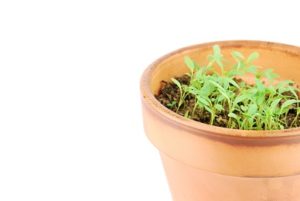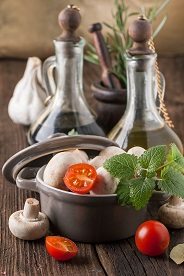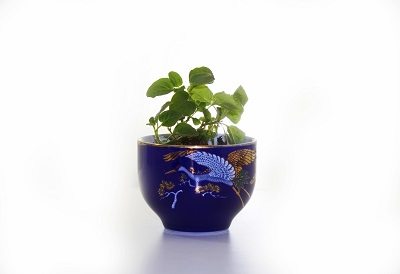Are you short for space in your garden ? Not enough room to dig? Live in an apartment? Well you can still plant and even harvest food following these simple tips.
You can raise substantial amounts of many edibles in containers on a patio, deck, porch or balcony.
Container gardening has grown rapidly recently and we have developed an increasing number of compact and dwarf varieties intended to succeed in small spaces.
Containers also make it easier for you to control the soil, light, water and fertilizer.
Here are some tips for getting started with container vegetable gardening.

Bigger is better. The greatest challenge of container vegetable growing is watering, since soil dries out faster in pots than in the ground. A larger volume of soil won’t dry out as fast, so choose the biggest pot you can. It’s fine to mix compatible plants in a single large pot. Make certain that any container has holes so excess water can drain away from the soil.
Plan for watering. So-called “self-watering” containers have a reservoir beneath the soil topped with a grid through which the roots can reach down to the water. With these containers you won’t have to water as often, but you still have to keep that reservoir filled.
And in the hot summer, mature plants will empty that reservoir fast, so you may have to fill it daily. Spread mulch over the soil in pots just as you would in a garden, to keep moisture from evaporating. Planning a summer vacation? It’s wise to stick to spring and fall crops, such as greens, peas and radishes, and let the pot garden go fallow while you’re gone.
– source burpee.com
Pots, tubs, and half barrels overflowing with flowers add appeal to any garden, but container gardening can serve a practical purpose too. Container gardening is ideal for those with little or no garden space. In addition to growing flowers, gardeners limited to a balcony, small yard, or only a patch of sun on their driveway can produce a wide variety of vegetable crops in

containers. Basil, chives, thyme, and other herbs also are quite happy growing in pots, which can be set in a convenient spot right outside the kitchen door.
Container gardnering also adds versatility to gardens large and small. Plants lend instant color, provide a focal point in the garden, or tie in the architecture of the house to the garden. Place them on the ground or on a pedestal, mount them on a windowsill, or hang them from your porch.
A pair of matching containers on either side of the front walk serves as a welcoming decoration, while container gardening on a deck or patio can add color and ambiance to such outdoor sitting areas.
You can use single large containers for outdoor decoration, but also consider arranging groups of pots, both small and large, on stairways, terraces, or anywhere in the garden.
Clusters of pots can contain a collection of favorite plants—hen-and-chicks or herbs used both for ornament and for cooking, for example—or they may feature annuals, dwarf evergreens, perennials, or any other plants you’d like to try.
Houseplants summering outdoors in the shade also make a handsome addition to container gardening. Window boxes and hanging baskets offer even more ways to add instant color and appeal.Containers planted with a single species—rosemary or a bold variegated ornamental grass, for example—can be stunning garden accents. Containers planted with a mix of plants are fun to create and offer almost unlimited possibilities of combinations.
The best combinations depend on plants that feature handsome foliage and flowers produced over a long bloom season.One easy guideline for choosing the plants to combine in a container is to include “a thriller, a spiller, and a filler.” That translates to at least one focal-point plant (the thriller), such as coleus or a geranium with multicolored leaves, for example, combined with several plants that spill over the edge of the pots—such as petunias, bacopa, creeping zinnias, or ornamental sweet potatoes.
Finally, add the fillers, which are plants with smaller leaves and flowers that add color and fill in the arrangement all season long.Good fillers include salvias, verbenas, ornamental peppers, and wax begonias, as well as foliage plants like parsley or licorice plants. You may also want to include a plant for height, such as an ornamental grass like purple fountain grass. Add a trellis or pillar to a container and you can use a vine to add height to the composition. You’ll need a total of five or six plants for an 18- or 24-inch container.
Keep in mind that it’s easier to grow plants in large containers than small ones. That’s because large containers hold more soil, which stays moist longer and is less subject to rapid temperature fluctuations. Small hanging baskets are especially prone to drying out, and during hot summer weather, you may have to water them twice a day to keep plants alive.


